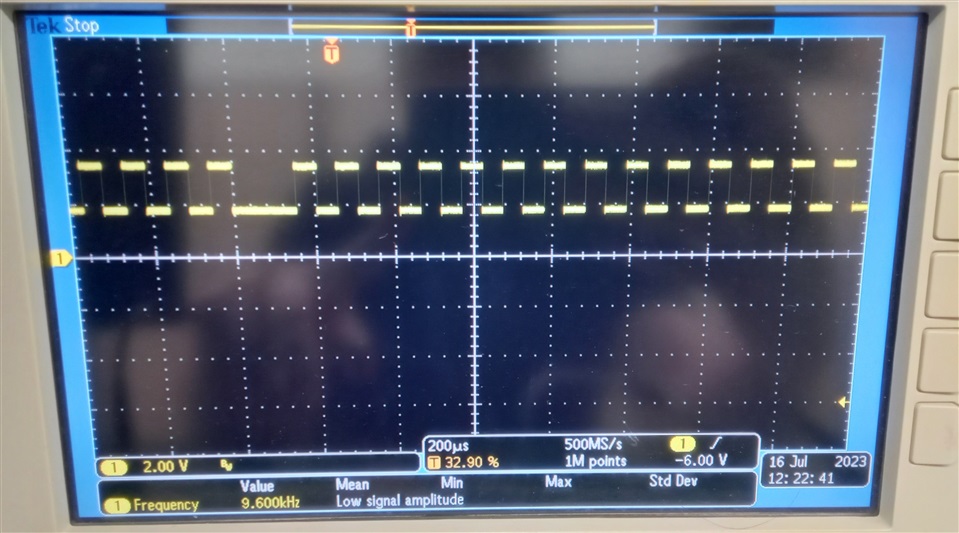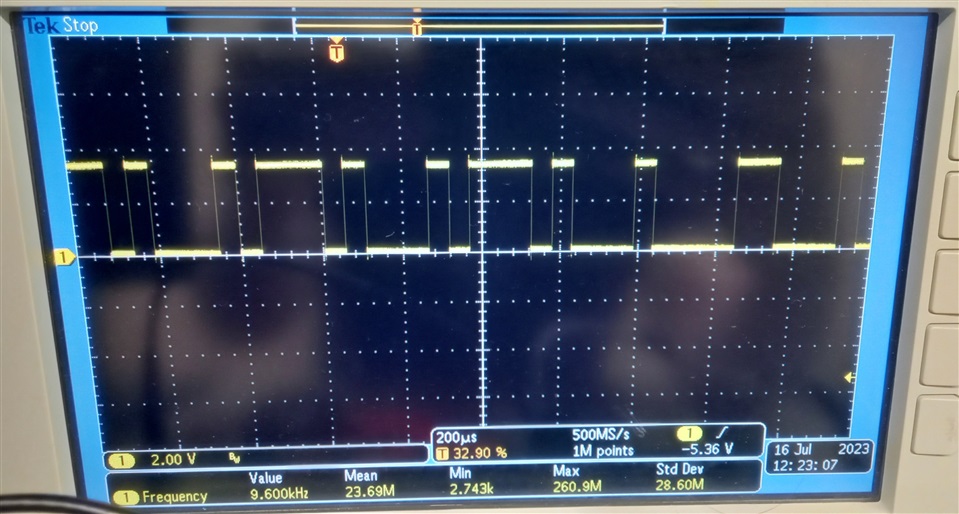Other Parts Discussed in Thread: C2000WARE
Hi,
I am trying to send and receive data via SCI with TMS320F28379D controlCard Rev1.3. My goal is to read the data from the RS422.
I'm running sci_ex2_loopback_interrupts.c from C2000Ware. When loopback function is active, it goes into RX interrupt, when I examine the TX pin with an oscilloscope, I get a good signal, there is no problem here.
In the code, when I turn off the enableLoopback function and connect the TX pin (GPIO29) directly to the RX pin (GPIO29), it does not enter the RX interrupt. When I examine the registers, I see that the SCIFFFE register is 1. Isn't the RX supposed to go into the interrupt with this cable connection?
When I examine the point where I connect the two pins with an oscilloscope, I see that the voltage that should normally be 3.3V is 1.5V with an offset of about 1.8V. Where does the 3.3V voltage get this offset from? Is it because the signal amplitude is 1.5V I can't enter the RX cutout?
When I measure the RX pin at idle I see a constant 3.3V voltage.
In addition, using the same code and the code change I mentioned (only turning off the enableLoopback function), when I bring the isolated rs422 output to 3.3V with the ADM2682E and connect it to the RX pin, I see the same voltage offset signal. However, when I do not connect the RX pin of the ADM2682E to the mcu, I can read the 3.3V voltage level and the rs422 signal correctly with the oscilloscope. I tried with 2 different TMS320F28379D controlCard Rev1.3, both have the same situation.
In the sample code for everything I described above; I activate the #define _LAUNCHXL_F28379D macro and just turn the loopback function on and off, no other changes.

While the RX TX pins of the mcu are connected to each other or the signal output of the ADM2682E is connected to the RX pin. In both cases when i inspect the RX pin there is offset.

When the output pin of ADM2682E is idle.




